Looking to start off-piste skiing but unsure about the right gear? Short skis like Snowfeet can make your freeride journey smoother and more fun. Here's why:
- Easier to control: Short skis help beginners navigate tight turns and tricky terrain with less effort.
- Lightweight and portable: These skis fit in a backpack, making them perfect for quick trips or backcountry adventures.
- Faster learning curve: Their design reduces the intimidation factor, helping you build confidence faster.
Snowfeet offers a range of options, like the compact 44 cm Skiskates or the 120 cm Short Skis, to match your skill level and terrain preferences. Whether it's weaving through trees or gliding on fresh powder, this gear is built to help you enjoy the ride while staying in control.
Ready to hit the snow? Let’s dive into how Snowfeet can transform your off-piste experience.
FREERIDE FOR BEGINNERS | HOW TO XV
Why Short Skis Like Snowfeet* Work Best for Beginners

Getting the right gear can make or break your first experiences with off-piste skiing. If you’re just starting out, short skis like Snowfeet* might be your best friend. Unlike the longer, more technical designs offered by big names like Rossignol, Salomon, and Völkl, Snowfeet* focuses on what beginners actually need: simplicity, control, and confidence.
It’s not just about the size of the skis, though. Snowfeet* has reimagined how beginners approach off-piste skiing by prioritizing accessibility over speed and advanced features. This shift in focus provides real benefits, making the learning curve smoother and the experience far less intimidating.
Better Maneuverability and Control
Short skis react to your movements instantly, which makes turning and pivoting a breeze. Skiblades and Skiskates are specifically designed to give you better control, especially in tricky spots like tight tree runs, moguls, or narrow trails.
"A longer ski is going to be more difficult to turn for a novice skier." – PoignantPoint22
With traditional long skis, beginners often struggle to initiate turns, especially in off-piste conditions like powder or crusty snow. The shorter edges of Snowfeet* skis let you adjust your line quickly and easily, which means less fighting with your gear and more enjoying the ride. If you’re navigating tight terrain, shorter skis are far less cumbersome and help reduce balance issues or edge catches, giving you the confidence to explore new areas.
Lightweight and Easy to Transport
One of the standout features of Snowfeet* skis is how lightweight and portable they are. Unlike traditional ski setups from brands like Burton or K2 - which often require roof racks, oversized bags, and careful handling - Snowfeet* skis can fit in a regular backpack. This makes them perfect for backcountry skiers who want to hike to untouched powder without lugging around heavy, awkward gear.
Imagine this: you park at a trailhead, toss your Snowfeet* into your pack, hike to your favorite spot, and start skiing - all without needing a chairlift. It’s a game-changer for accessing fresh snow in remote areas.
Storage and travel are just as simple. Forget about dedicating your garage to bulky skis or dealing with roof-mounted carriers. Snowfeet* products can be tucked into a closet or kept in your car’s trunk, ready for your next adventure. Plus, they’re small enough to fit in standard luggage, so you can skip the hassle (and cost) of oversized ski bags when flying to your next ski destination.
A Faster Learning Curve
Short skis like Snowfeet* make learning easier by reducing the intimidation factor. Their manageable size lets beginners focus on building confidence and mastering basic techniques without battling oversized equipment.
"I'd really only recommend a really short ski, chest/shoulder length to someone who is brand new." – PoignantPoint22
This advice reflects a growing trend: shorter skis help beginners develop foundational skills faster. Traditional ski lessons often put newcomers on gear that’s too advanced, leading to frustration and slower progress. With Snowfeet*, the focus shifts to technique and terrain awareness, making it easier to transition from basic turns to more advanced moves.
The lightweight design also encourages more frequent practice. Whether it’s a quick session on a local hill, a backyard adventure after fresh snowfall, or a weekend trip, the ease of transport and setup means you’ll get more time on the snow. And more time on the snow equals faster improvement. Plus, feeling in control of your gear creates a positive feedback loop - confidence leads to better skills, which leads to even more confidence as you explore the world of freeride skiing.
Comparing Snowfeet* Skiblades and Skiskates Models
Snowfeet* has carved a niche in the snow sports world with its compact, beginner-friendly designs. Whether you're headed for your favorite local slope or venturing into fresh, untracked powder, their models are all about simplicity, control, and portability. Picking the right Snowfeet* gear depends on your skill level and the type of terrain you plan to tackle. Let’s break down the options to help you find your match.
Key Features of Snowfeet* Models
-
Skiskates (44 cm / ~17 in)
Think of these as the ultimate grab-and-go option. Skiskates fit snugly over your regular winter shoes, making them ideal for groomed runs or light snow. No ski boots? No problem. They’re perfect for those spontaneous snow adventures. -
Skiblades (65 cm / ~25.6 in)
Looking for something with a bit more performance? The 65 cm Skiblades are all about responsiveness and precision on firm snow. Their compact size makes them easy to pack, so they’re ready whenever you are. -
Skiblades (99 cm / ~38.8 in)
If you’re a beginner but want to venture into deeper snow, this model’s got you covered. The extra length gives you better float and stability, while still being much easier to manage than traditional skis. -
Short Skis (120 cm / ~47.2 in)
These strike a balance between compact design and the performance of standard skis. They’re versatile enough for a variety of terrains, offering more stability and speed without losing that easy-to-transport vibe.
All models share a few standout features: durable construction and bindings that work with winter shoes, ski boots, or snowboard boots. This flexibility makes them a great option for riders of all kinds.
Comparison with Traditional Equipment
Snowfeet* gear doesn’t just stand out - it flips the script on what you’d expect from snow equipment. Forget the bulky, complicated setups. Snowfeet* keeps things simple and fun, so you can spend more time shredding and less time struggling with your gear.
Here’s a quick look at how Snowfeet* stacks up against conventional skis and snowboards:
| Feature | Snowfeet* Equipment | Conventional Equipment |
|---|---|---|
| Portability | Ultra-compact | Requires large cases or roof-mounted carriers |
| Boot Compatibility | Works with winter shoes, ski or snowboard boots | Requires specialized boots |
| Ease of Learning | Quick and intuitive for beginners | Steeper learning curve with more setup |
| Versatility | Great for varied terrains and quick trips | Less suited for impromptu adventures |
For U.S. snow conditions - whether it’s the steep slopes of Jackson Hole or the scenic trails of Vermont - Snowfeet* models bring a fresh approach to off-piste fun. Their lightweight design makes backcountry spots more accessible, while the range of models ensures there’s something for everyone. Ready to hit the snow? Snowfeet* has you covered.
sbb-itb-17ade95
How to Choose the Right Snowfeet* Model for Off-Piste Skiing
Picking the right Snowfeet* model depends on your skill level and the terrain you plan to tackle. Unlike traditional skis that come with a bulky setup, Snowfeet* offers lightweight, versatile options tailored for different conditions.
Factors to Consider When Choosing a Model
Your choice should start with an honest look at your skill level. If you're a beginner, the Snowfeet Mini Ski Skates (38 cm/~15 in) are a great starting point. At $250, they offer an affordable way to ease into off-piste skiing.
Here are some key factors to keep in mind:
- Body weight and height: Heavier skiers (over 180 lbs) might prefer the Snowfeet Short Skis (120 cm/~47.2 in), priced at $775, which provide better float in deep powder. Lighter skiers may find the Skiblades (65 cm/~25.6 in) a better fit, starting at $635.
- Terrain: For tight spaces like tree runs, the Skiskates (44 cm/~17.3 in) at $575 offer quick and nimble handling. If you're heading into open bowls or deeper powder, the Snowfeet POWDER model (99 cm/~38.8 in) at $675 is designed to shine in those conditions.
- Budget: Starting small with the Mini Ski Skates is a smart way to test the waters without spending too much. As your skills grow, you can expand your gear collection to match your ambitions.
Once you've narrowed down your model, it's time to look at how Snowfeet* ensures compatibility with boots and bindings.
Binding and Boot Compatibility
One of Snowfeet*’s standout features is how adaptable it is. Every model is designed to work with a variety of boots, whether you're using winter boots, ski boots, or snowboard boots. Swapping between them is quick and easy.
Take the Snowfeet PRO model (50 cm) for example. Priced at $275, it comes with adjustable bindings that make switching boots a breeze. This flexibility is perfect for anyone who wants to move seamlessly from casual outings to backcountry adventures.
Multi-Terrain Use Across Different Conditions
Snowfeet* gear isn’t just versatile - it’s built to handle a range of terrains. The Skiblades (99 cm) at $675 are a great example, offering a responsive ride whether you’re gliding over firm morning snow or slushy afternoon trails.
This adaptability makes Snowfeet* ideal for off-piste skiing, where conditions can change in an instant. Plus, the compact size is a game-changer. In urban areas like Denver or Salt Lake City, you can easily carry your setup for quick sessions. For backcountry trips, the lightweight design helps reduce fatigue during long treks, and many models are small enough to fit in a standard backpack.
For deeper powder days, the Snowfeet POWDER model strikes a perfect balance between maneuverability and performance while still being portable. Its wider profile provides extra float, making it a great choice for skiers looking to explore untouched snow without lugging around heavy gear.
Off-Piste Tips for Beginners Using Short Skis
Getting the hang of off-piste skiing with short skis takes a bit of a shift in mindset compared to using traditional long skis. Snowfeet* products make this transition smoother, thanks to their compact design, which offers some clear perks. But to really make the most of them, you'll need to tweak your technique and approach to off-piste skiing.
Basic Techniques with Short Skis
Your weight distribution is the first thing to adjust. Unlike traditional skis, where leaning forward is key, short skis work better with a centered stance. Aim to keep your weight evenly balanced on both feet, with just a slight forward lean.
When it comes to turning, short skis make it easier and more intuitive. Start with small, controlled movements rather than wide, sweeping turns. For example, the Skiskates (44 cm), priced at $575, are incredibly responsive - just a little knee movement is enough to guide your turns. This direct responsiveness makes short skis a joy to maneuver.
Stopping is another area where short skis excel. The classic snowplow technique works well, but you'll notice it takes much less effort. Models like the Skiblades (65 cm), available for $635, allow for quick hockey stops. Simply turn your skis perpendicular to the slope, and the reduced surface area helps you stop swiftly without much resistance.
If you're new to off-piste skiing, start on easier terrain to build confidence. The Snowfeet Mini Ski Skates (38 cm), which cost $250, are great for beginners who want to practice before tackling steeper slopes. Once you've nailed these basics, you'll be ready to adapt to different snow conditions.
Navigating Different Snow Conditions
Skiing in powder with short skis feels a bit different. Instead of relying on flotation like with long skis, you'll need to keep moving. The Snowfeet POWDER model (99 cm), priced at $675, is designed for this type of snow. Frequent, rhythmic turns are the key to staying on top of the powder, and the shorter length makes this easier to manage.
On challenging terrain - think uneven surfaces, moguls, or tight tree runs - short skis really shine. Their compact size lets you navigate through tight spaces and handle unexpected bumps or hidden obstacles more easily. The Skiblades (99 cm), also $675, offer just the right balance between stability and maneuverability, making them a solid choice for tricky runs.
For crusty or variable snow, short skis handle the job well. When you encounter changing snow textures mid-turn, the smaller surface area reduces the chance of your skis catching or diving. You'll find it easier to power through crusty patches without the drama that often comes with longer skis. Mastering these conditions is all about staying adaptable and focused.
Safety and Avalanche Awareness
Short skis offer quick responsiveness, which can be a lifesaver in unpredictable conditions. That said, avalanche education is a must for anyone venturing off-piste. Before heading into the backcountry, consider taking an AIARE Level 1 course. Popular spots like Colorado's Vail Pass or Utah's Wasatch Range see plenty of avalanche activity each season, so knowing the risks is crucial. While your Snowfeet* gear won't reduce avalanche risks, it does give you some practical advantages, like easier maneuverability in emergencies.
Always carry essential safety gear, including an avalanche transceiver, probe, and shovel. The lightweight nature of Snowfeet* products means you can pack extras like a first aid kit, emergency shelter, or additional snacks without feeling weighed down. For example, the Snowfeet PRO (50 cm), priced at $275, pairs well with a compact safety kit.
Planning and communication are even more critical when using short skis. Since you'll likely venture into areas other skiers might avoid, always let someone know your route and expected return time. Cell service is often unreliable in remote areas, so consider bringing a satellite communicator for backup.
Weather plays a big role in how short skis perform. Wind-loaded slopes, for instance, can be trickier with less surface area to keep you afloat. Check avalanche forecasts through resources like the Colorado Avalanche Information Center or Utah Avalanche Center before heading out.
Finally, be aware of local regulations, as they can vary widely. Some resorts limit off-piste access under certain conditions, while others require specific safety gear. National Forest areas often have different rules than private ski resorts. Make sure you're fully informed about the requirements for your chosen location - your compact gear doesn’t exempt you from these rules.
One of the standout benefits of Snowfeet* products is their portability and agility. If conditions turn dangerous, you can pivot or retreat far more quickly than someone on traditional skis. This quick adaptability can make all the difference in staying safe during unexpected situations.
Why Snowfeet* is the Best Choice for Freeride Beginners
When it comes to freeride skiing, Snowfeet* stands out as the perfect gear for beginners. Why? Because it’s all about control, simplicity, and ease of use. Unlike traditional long skis or snowboards, Snowfeet* offers unmatched portability, quick learning, and smooth handling, making it a no-brainer for anyone starting out.
Snowfeet* makes learning the basics a breeze. Thanks to its centered stance and intuitive turning mechanics, you’ll spend more time enjoying the slopes and less time struggling with your gear. Plus, there’s no need for bulky racks or oversized bags - Snowfeet* fits neatly into a regular backpack. That means quick hikes to fresh powder or spontaneous weekend trips are effortless.
Over 50,000 riders have already discovered the joy of Snowfeet*, with more than 5,500 reviews averaging 4.9 stars. Here’s what some happy users have shared:
"Easily one of the best purchases I have ever made to date." – Vanessa, UK
"These skiblades are so much fun and easy to control. Never going back to regular skis." – Andrew B.
"Absolute game-changer! They're light, fast, and incredibly fun to ride." – Nathan F.
Starting at $250 and going up to $775, Snowfeet* delivers high-quality performance at a fraction of the cost of traditional freeride setups. Even better, Snowfeet* is widely accepted at ski resorts across the U.S. and Europe, so you can hit the slopes wherever you want.
With Snowfeet*, every run is about the thrill - not the hassle of lugging around heavy equipment. It eliminates the intimidation of long skis, the pain of transporting gear, and the steep learning curve, giving beginners the confidence to jump into off-piste skiing right away. Its thoughtful design and top-notch performance make it the ultimate choice for your next freeride adventure.
FAQs
How do Snowfeet short skis compare to traditional skis for beginners learning off-piste skiing?
Snowfeet short skis, along with skiblades and skiskates, offer a fantastic option for beginners venturing into off-piste skiing. Thanks to their compact size and lightweight build, they're much easier to handle compared to traditional skis. With lengths ranging from 44 cm to 120 cm, these shorter skis make quick turns, smoother stops, and better control a breeze - perfect for boosting confidence early on.
On the other hand, traditional skis, which are often over 150 cm long, can feel unwieldy and tricky to navigate, especially in the unpredictable terrain of off-piste skiing. Snowfeet's shorter design takes the edge off the learning curve, making the whole experience less daunting and way more fun for beginners. If you're just starting out with freeride skiing, these short skis could be your new best friend!
What safety tips should beginners follow when using Snowfeet short skis for off-piste skiing?
When heading off-piste with Snowfeet short skis, safety should be your top priority - especially if you're a beginner. Start by wearing a well-fitted helmet to protect yourself from falls or collisions. Make sure your Snowfeet fit snugly, as this helps with control and stability on unpredictable terrain. Stick to areas that match your skill level, keep your speed in check, and make sure you're visible to others to minimize the chance of accidents.
To keep your balance and avoid sinking into the powder, focus on smooth, controlled turns and avoid any jerky movements. Thanks to their compact and lightweight design, Snowfeet are an excellent choice for beginners - they're easier to maneuver and feel less intimidating than traditional skis or snowboards. That said, taking the right precautions is key to having a safe and fun time on the slopes.
What is the best Snowfeet model for beginners looking to explore off-piste and backcountry skiing?
If you're new to venturing beyond the groomed slopes and into off-piste or backcountry terrain, the Snowfeet WALKSKI Backcountry Touring Skis (99 cm) could be just what you need. These compact skis strike a great balance between control and maneuverability, helping you navigate tricky terrain while boosting your confidence.
Thanks to their shorter length, these skis are much easier to handle than traditional ones, especially in tight spots or uneven areas. On top of that, they’re lightweight and easy to carry, making your freeride adventures smoother and more enjoyable as you ease into backcountry skiing.







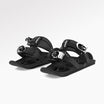

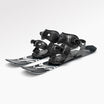
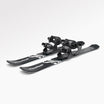

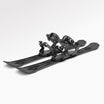

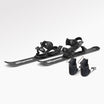






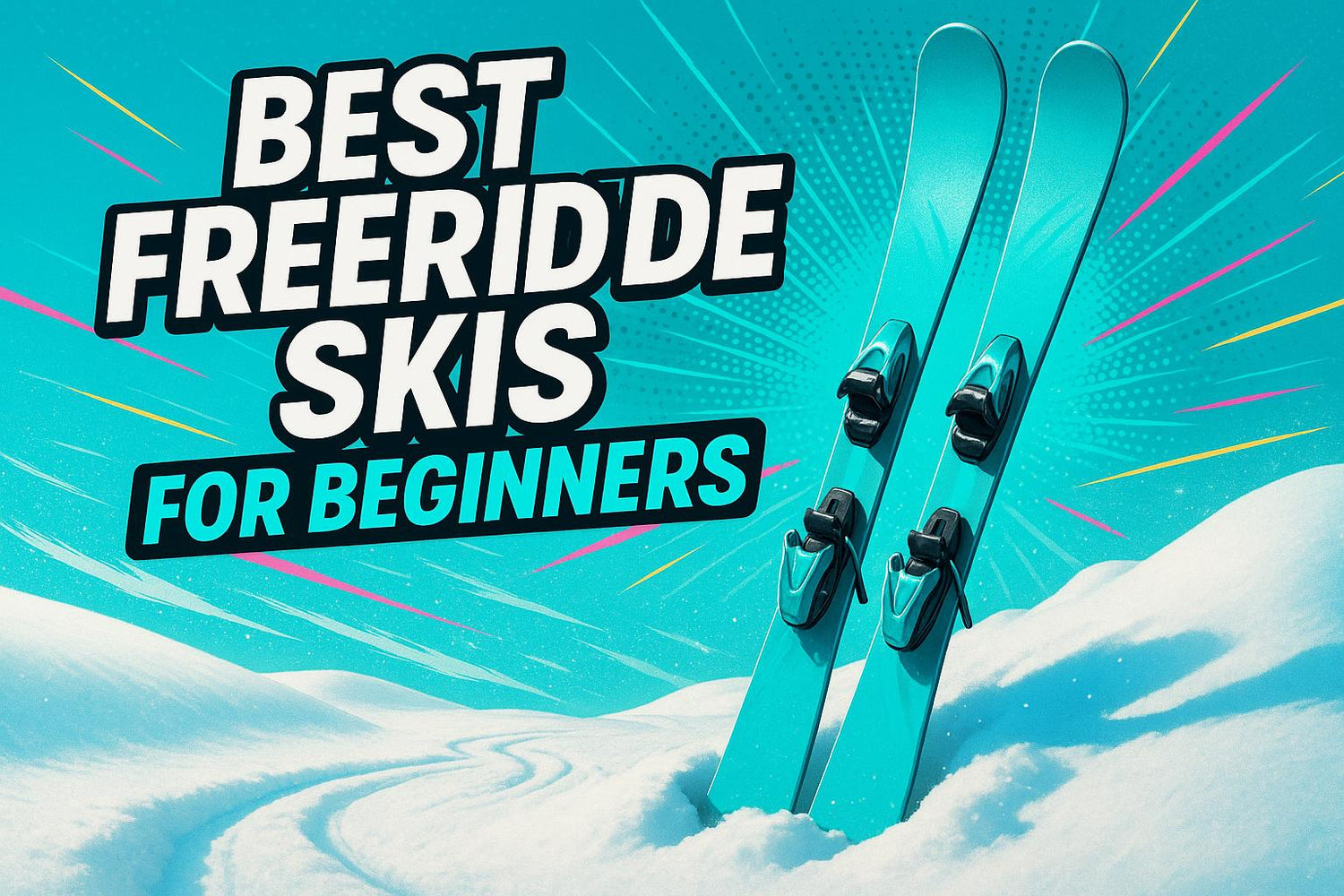

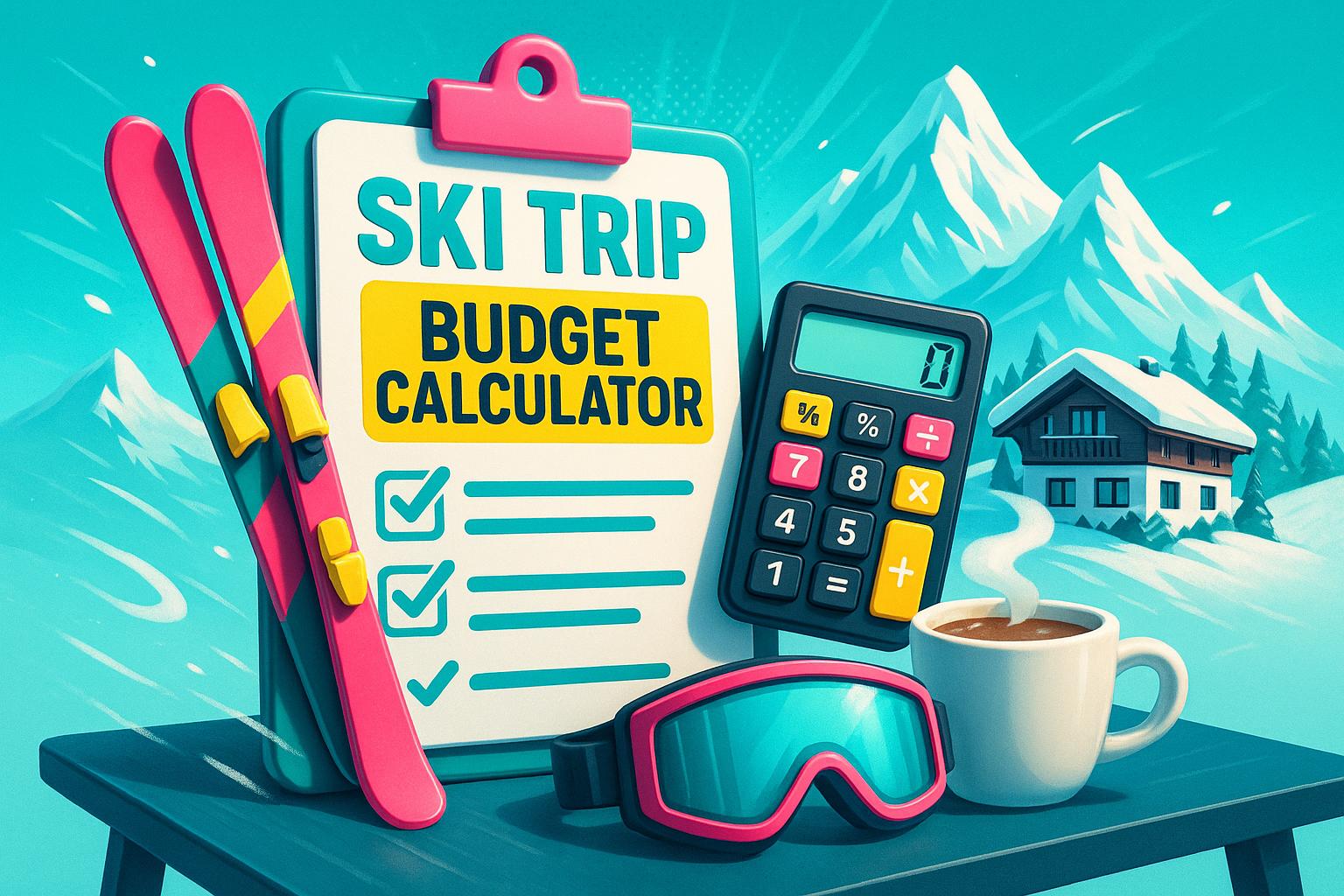

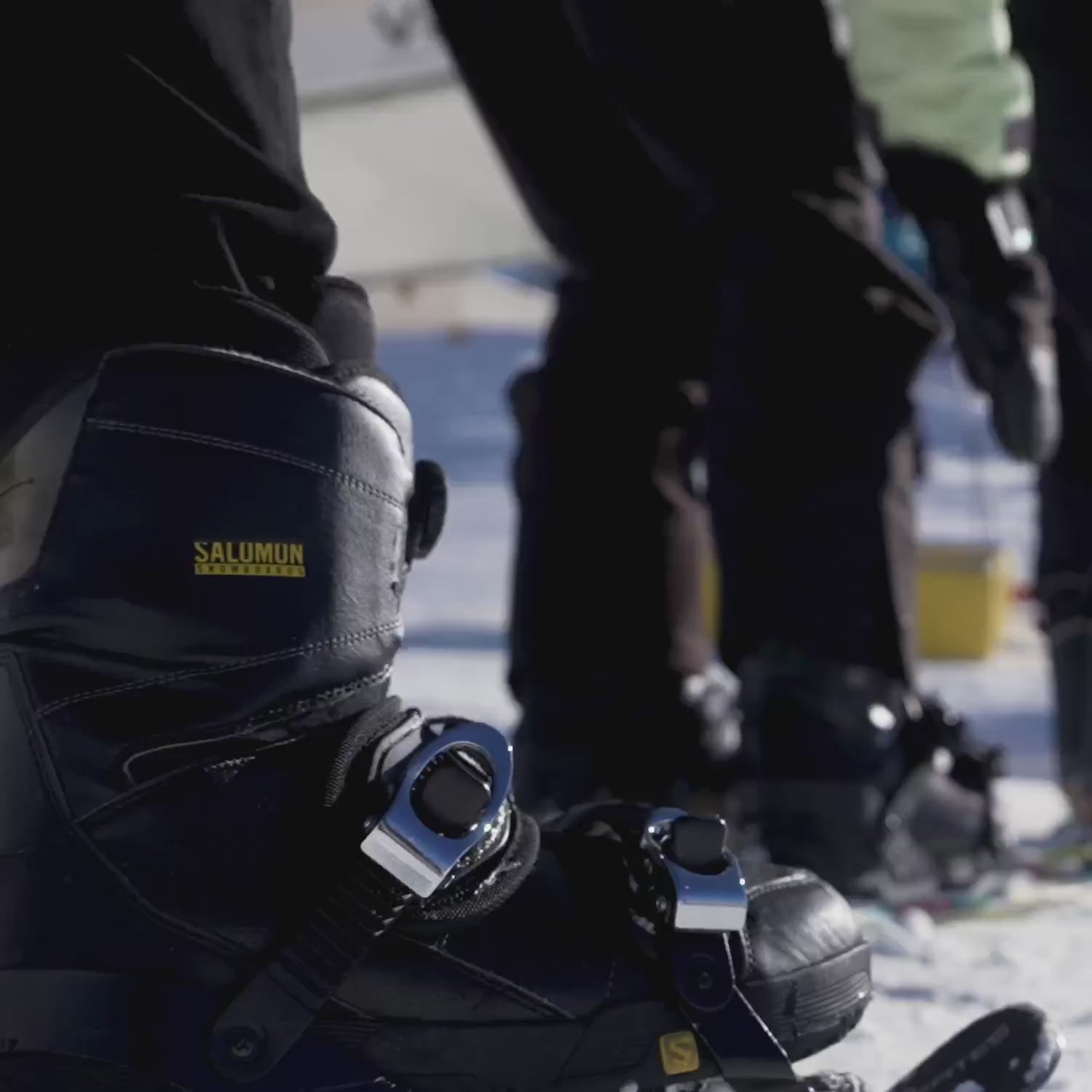

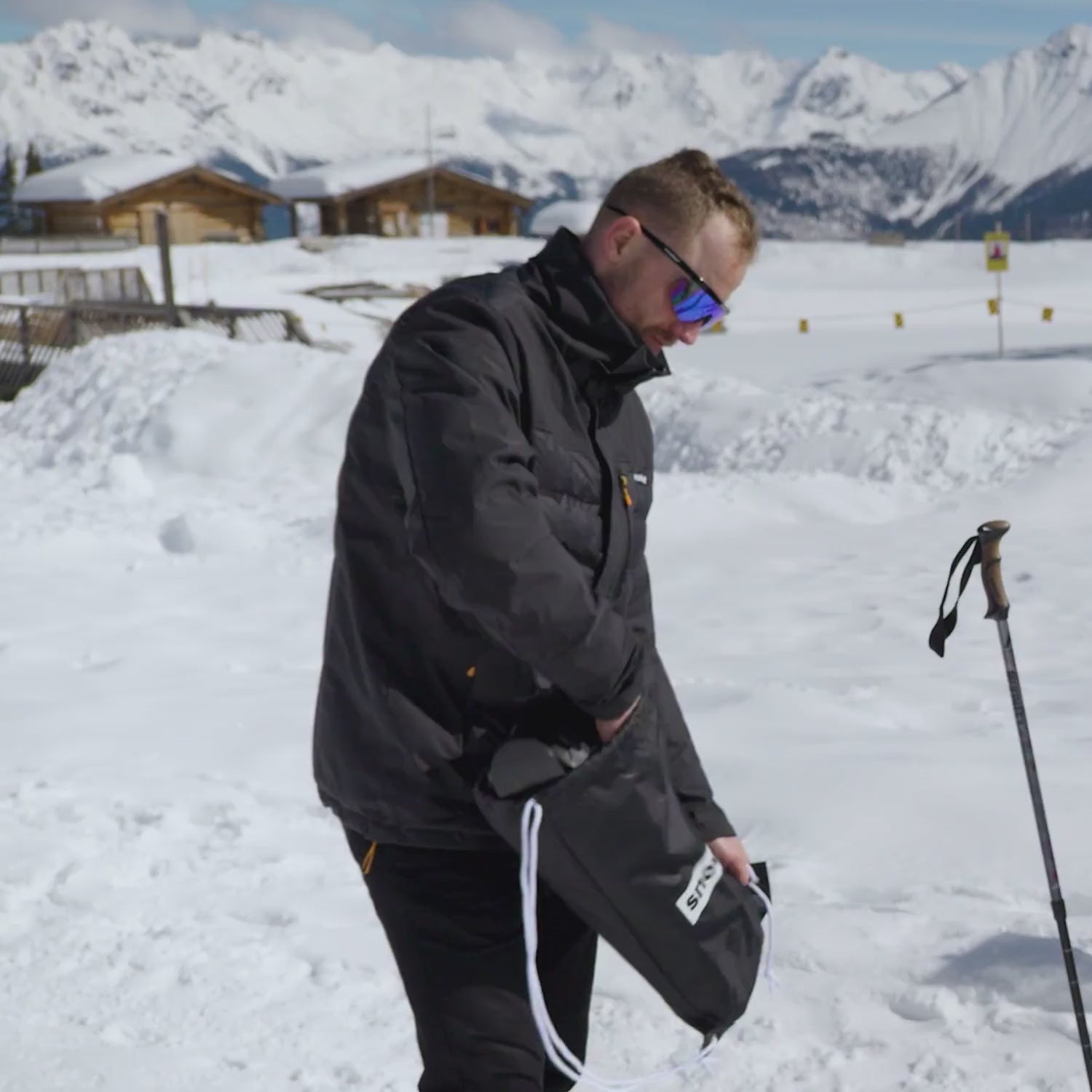
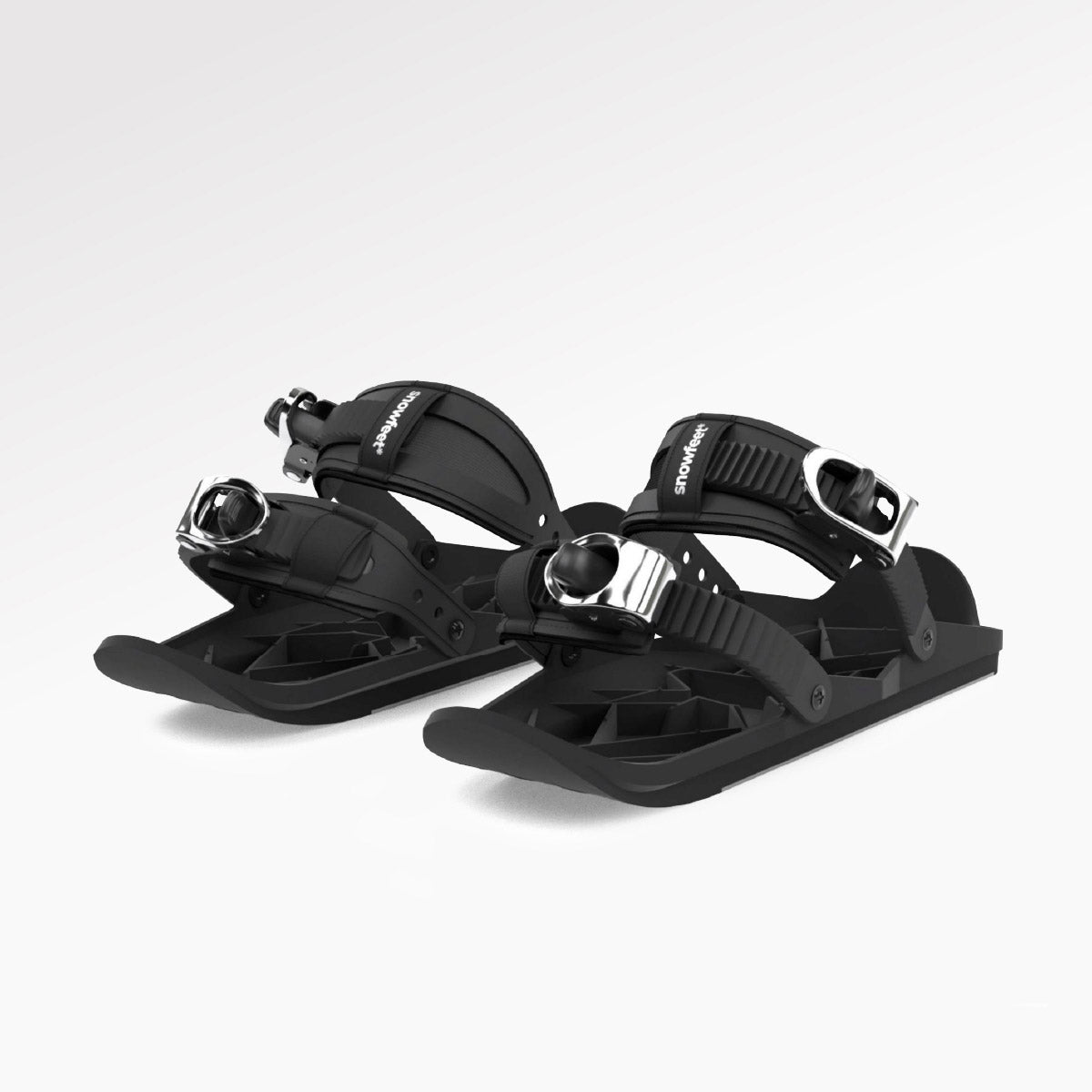
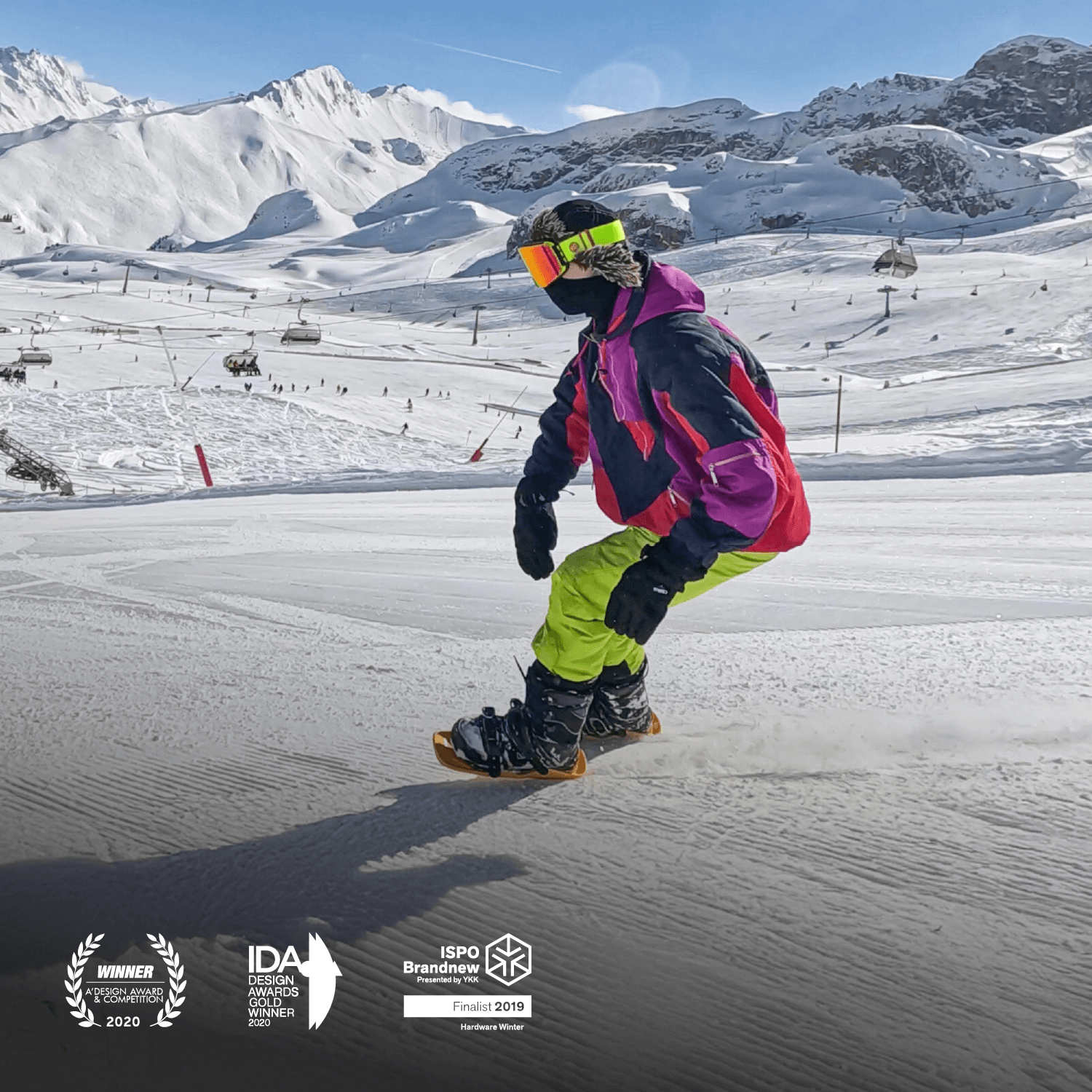
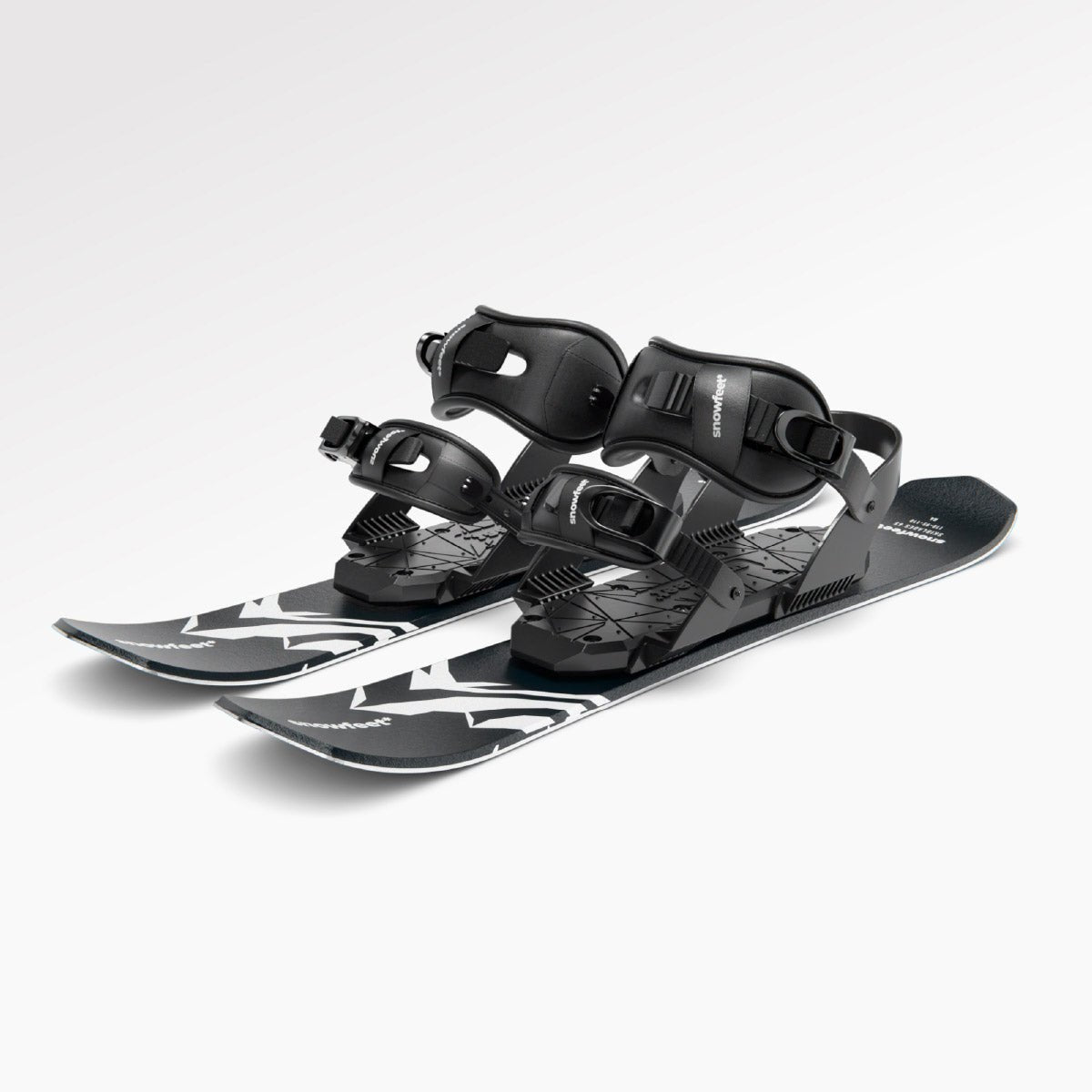
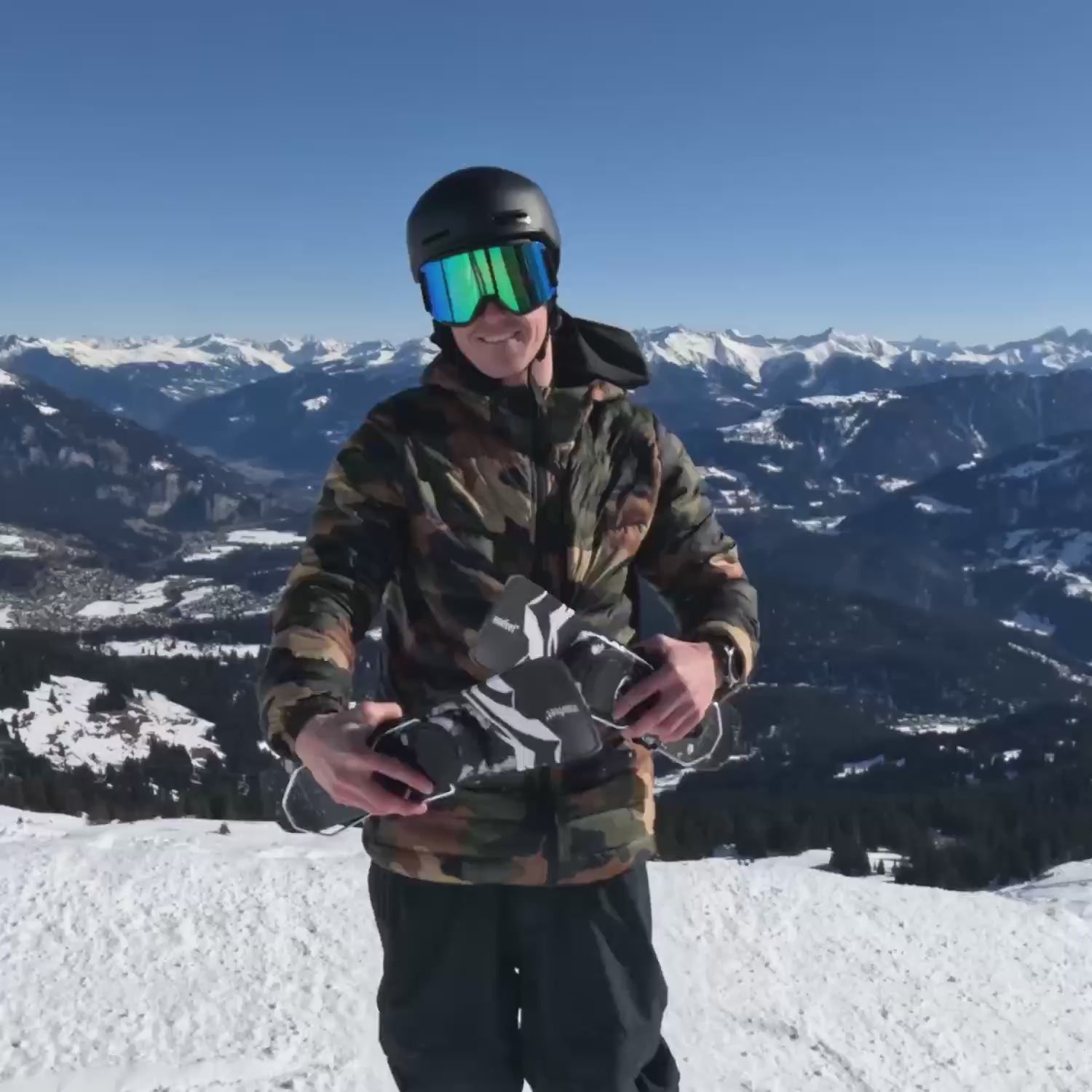
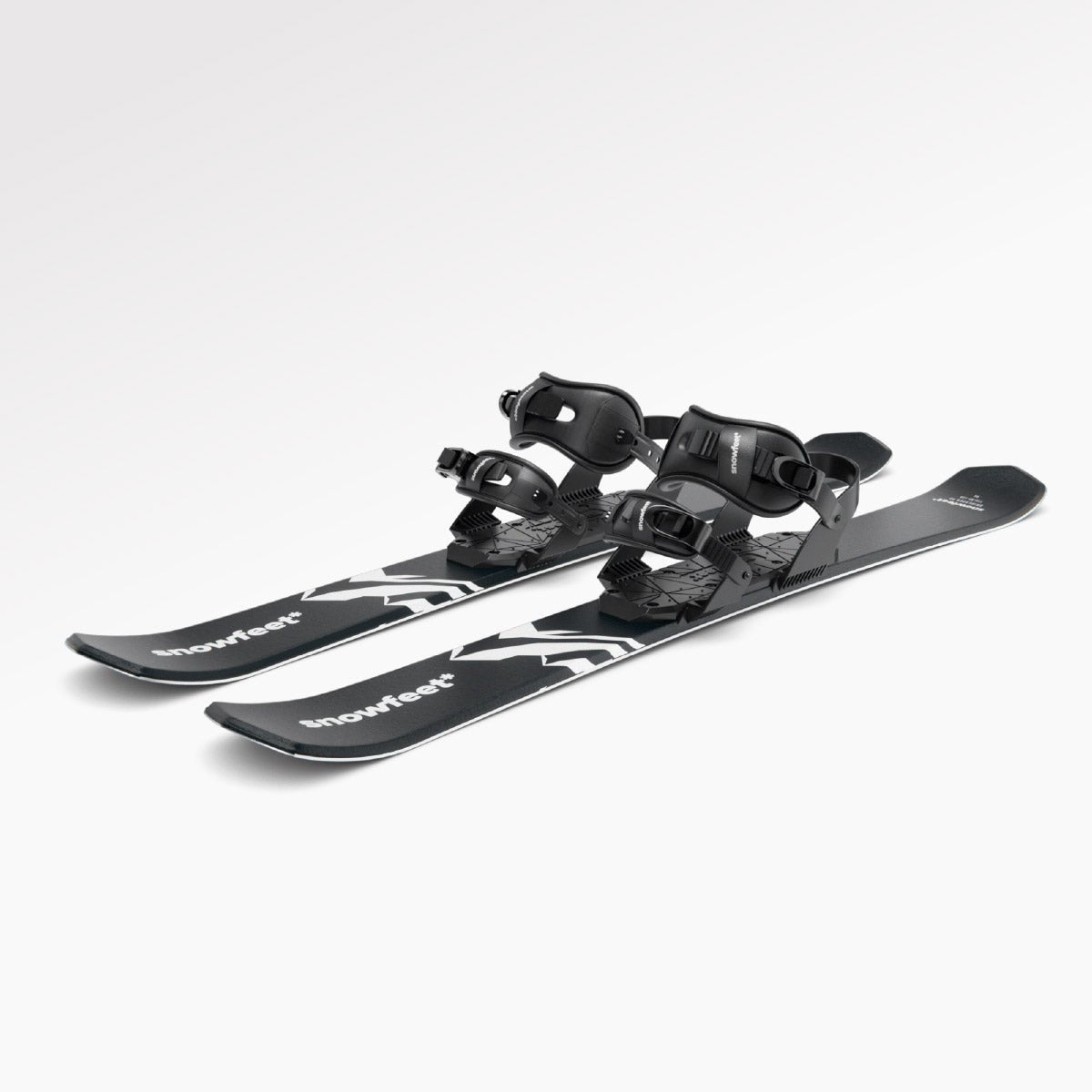
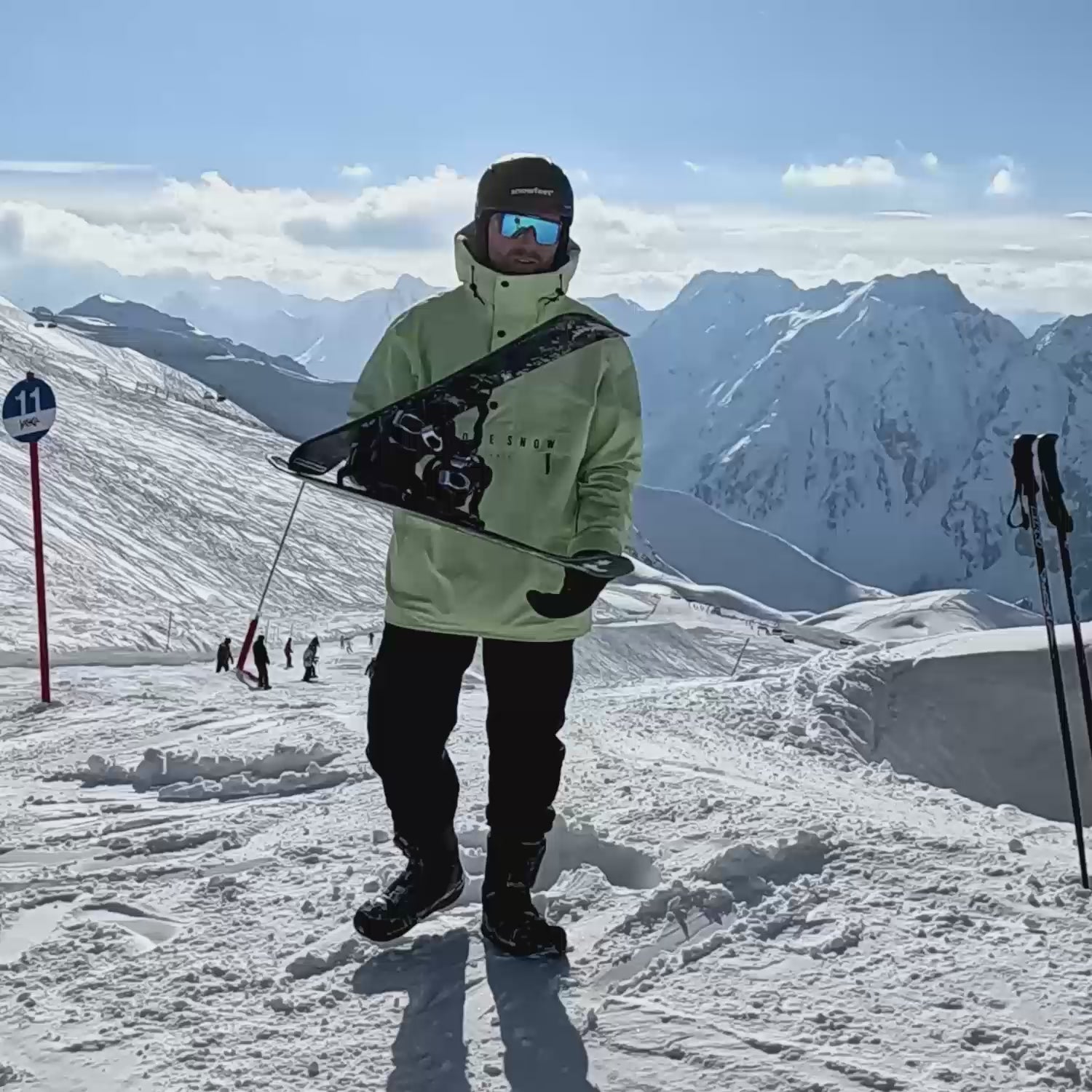
Leave a comment
This site is protected by hCaptcha and the hCaptcha Privacy Policy and Terms of Service apply.